Art & Exhibitions
In Pictures: See a Starfish Brooch by Salvador Dalí and Other Glittering Works From the Museum of Natural History’s Surreal Jewelry Show
Don't miss these bejeweled designs.
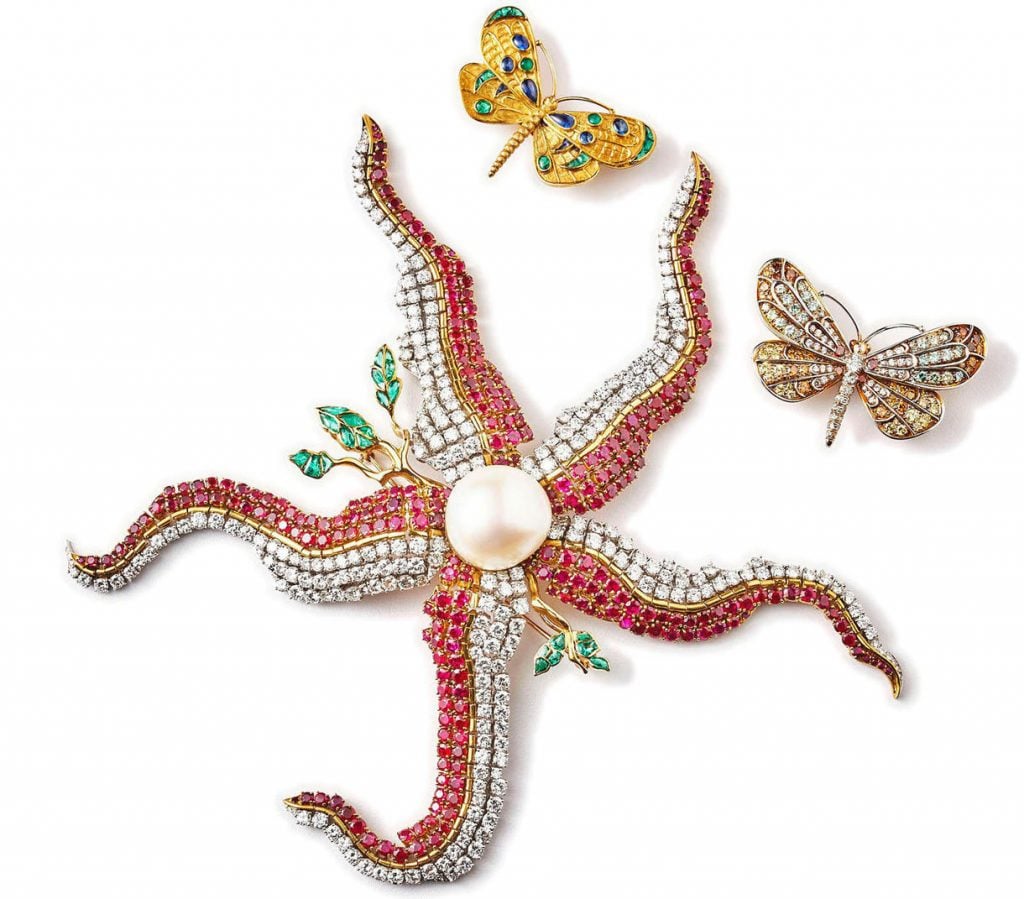
Don't miss these bejeweled designs.

Sarah Cascone

Last week marked the long-awaited reopening of the Halls of Gems and Minerals at New York’s American Museum of Natural History.
Among the many upgrades to the formerly dated space, last renovated in 1976, is a new exhibition gallery that will host special exhibitions.
The inaugural show, “Beautiful Creatures: Jewelry Inspired by the Animal Kingdom,” is curated by the jewelry historian Marion Fasel and features 104 piece of jewelry made over the past 150 years—essentially, since the museum’s founding in 1869.
“It brings together extraordinary jewelry, inspired by fish, birds, butterflies, panthers, lizards, even spiders and jellyfish among others, fashioned by jewelry artists from around,” museum president Ellen Futter said at the press preview.
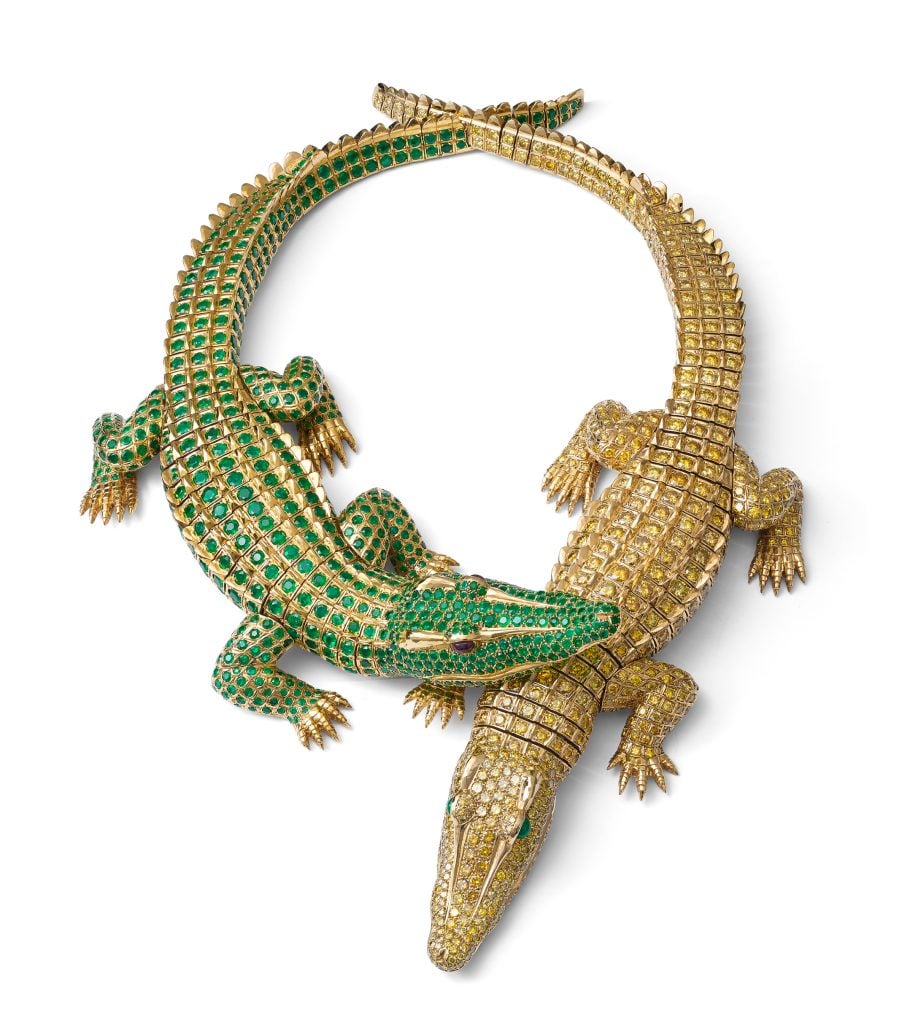
According to legend, when actress María Félix commissioned this necklace, she carried live baby crocodiles into Cartier in Paris to serve as models for the design. The realistic sculpting of the gold includes the scutes of a crocodile’s skin. There are 60.02-carats of fancy intense yellow diamonds and 66.86-carats of emeralds in the setting. Photo by Nils Herrmann, Cartier Collection ©Cartier.
One section of the show is dedicated to late 19th-century jewelry inspired by insect collecting, a popular fad of the period that grew in part out of the collections of institutions like the American Museum of Natural History. There’s an emerald and gold weevil and a stag beetle brooch made of diamonds, rubies, gold, and white gold.
Also on hand is the famous Cartiér panther, as well as a snake necklace made by the house featuring no fewer than 2,473 diamonds, for a total of 178.2 carats.
But the jeweler’s most remarkable contribution to the exhibition is undoubtedly a crocodile necklace created for actress María Félix in 1975.
“The legend is that she walked into Cartier in Paris with a small crocodile and said ‘make me a necklace’—and they did!” Fasel said. It contains 60.02-carats of intense yellow diamonds and 66.86-carats of emeralds.
Other one-of-a-kind of pieces in the exhibition include the Étoile de Mer Brooch made by Salvador Dalí for philanthropist Rebekah Harkness. She would wear it on her shoulder, so the starfish’s limbs would drape down her arms for an elegantly surreal accessory.
“It demonstrates extraordinary mounting of gems,” Fasel added. “It has diamonds and rubies on the arms that are totally flexible to the point of being like mesh.”
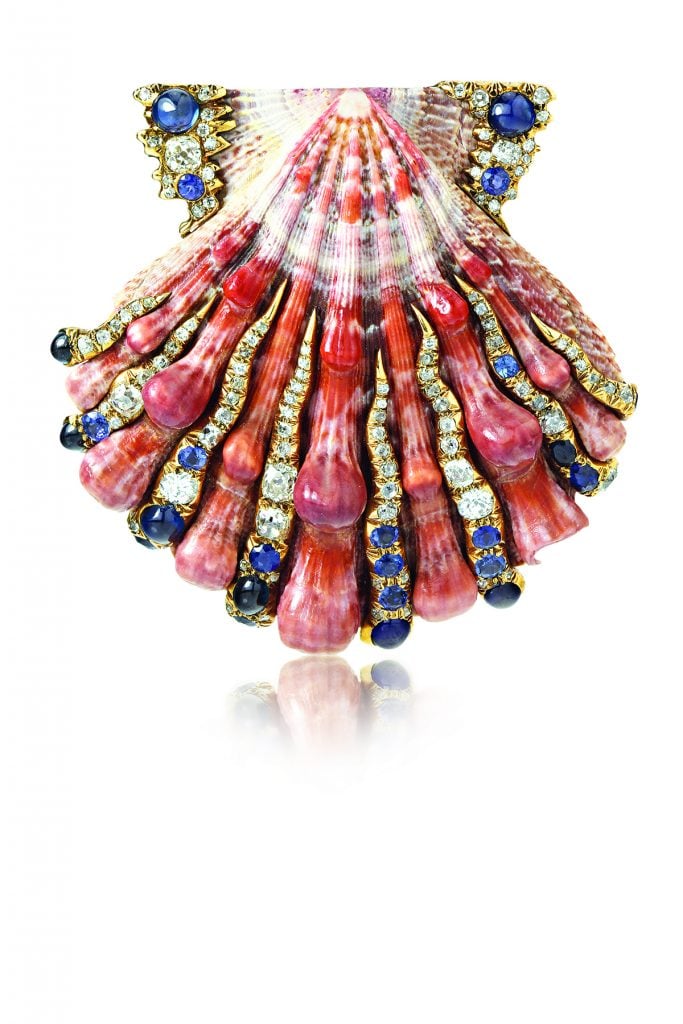
Two of Verdura lion’s paw shell brooches, made from lion’s paw scallops purchased by the Italian designer Duke Fulco di Verdura in the American Museum of Natural History’s gift shop in 1940, are on display in “Beautiful Creatures,” including this one. Photo courtesy of Stephen Webster.
The curator also managed to track down two pieces of animal jewelry with direct ties to the museum itself in the form of a pair of lion’s paw shell brooches by Italian designer Fulco di Verdura, who worked in New York.
“He got the shells from the gift shop here, took them across Central Park, and had his craftsmen set the diamonds along the crevices of the shell,” Fasel said. “He rather poetically thought it looked like water receding from the shell and shining in the sun.”
See more photos from the exhibition below.
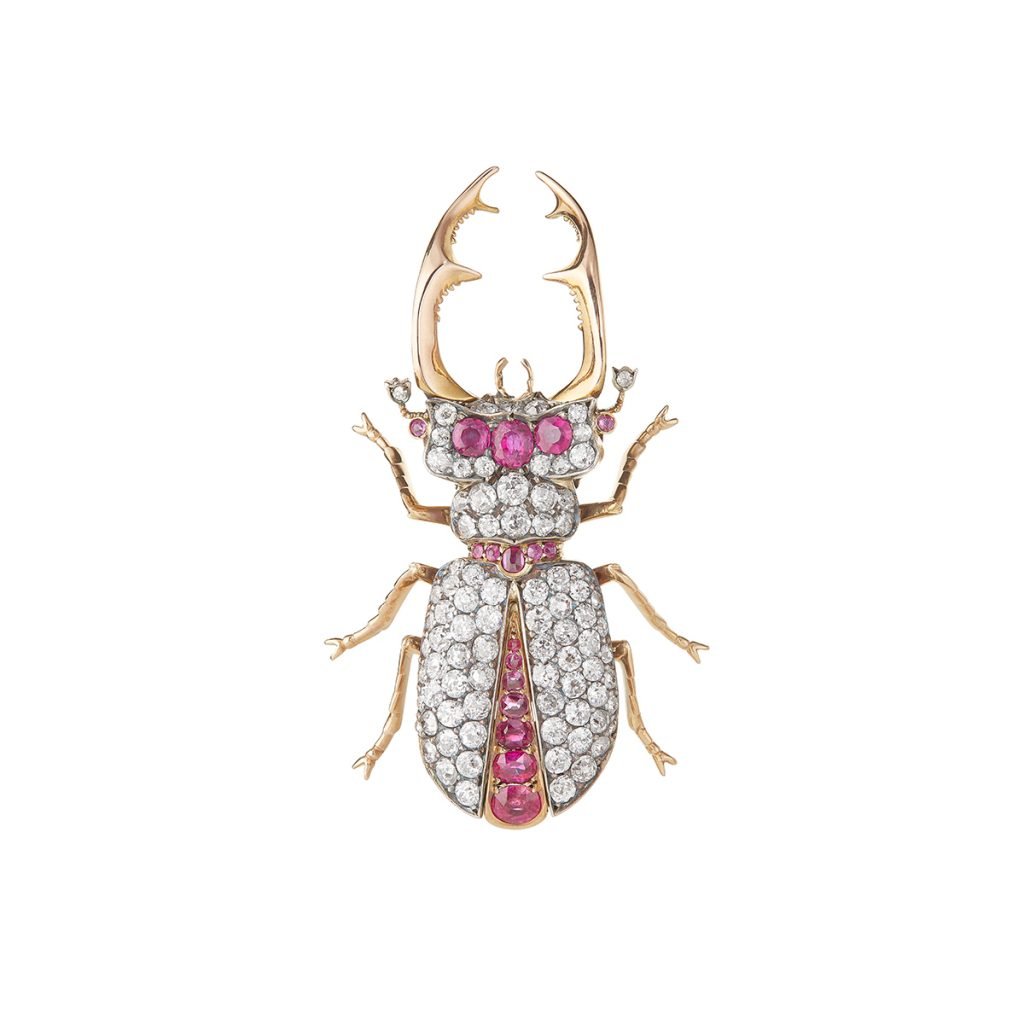
This Boucheron stag beetle brooch was made in 1895 from diamonds, rubies, gold, and white gold. The jewel has a removable pin on the back, making it possible to wear it as a pendant, hair ornament, or brooch. Photo ©Boucheron.
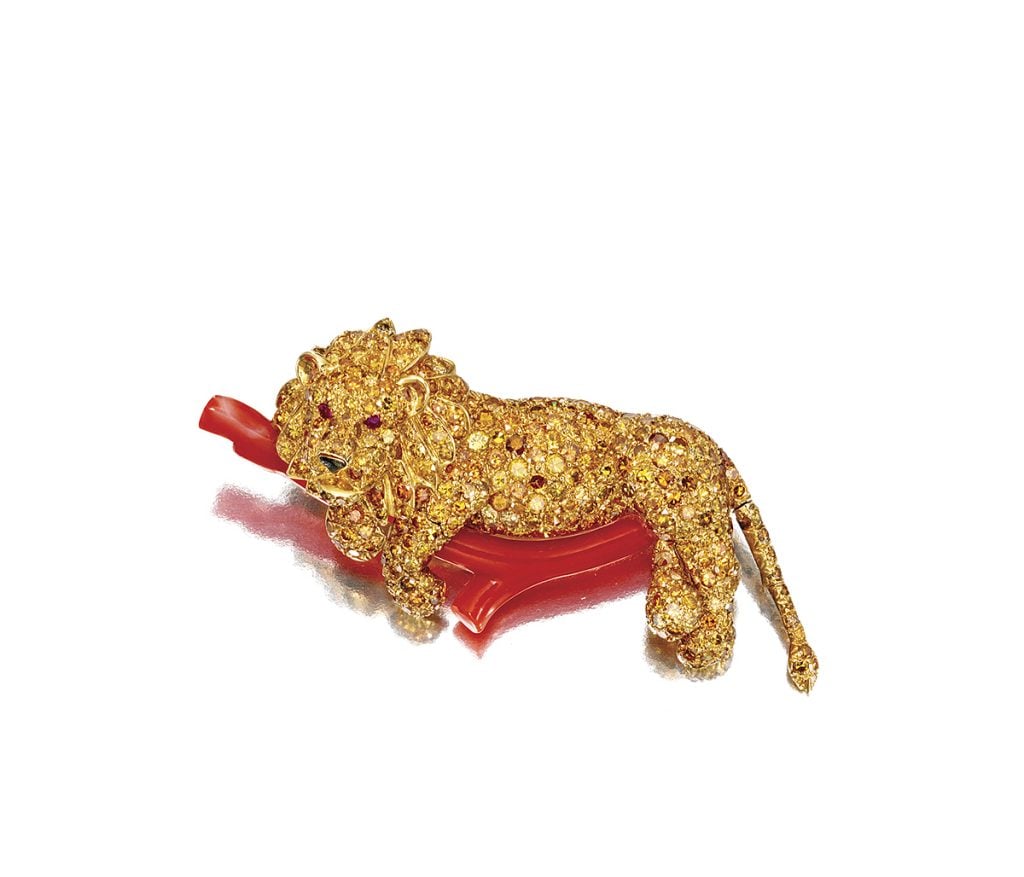
This Van Cleef & Arpels lion brooch is from the collection of philanthropist Brooke Astor, whose patronage of the New York Public Library has led to speculation that the piece might have been a nod to the marble lion statues that flank the main branch’s entrance on Fifth Avenue. Photo ©Sotheby’s.
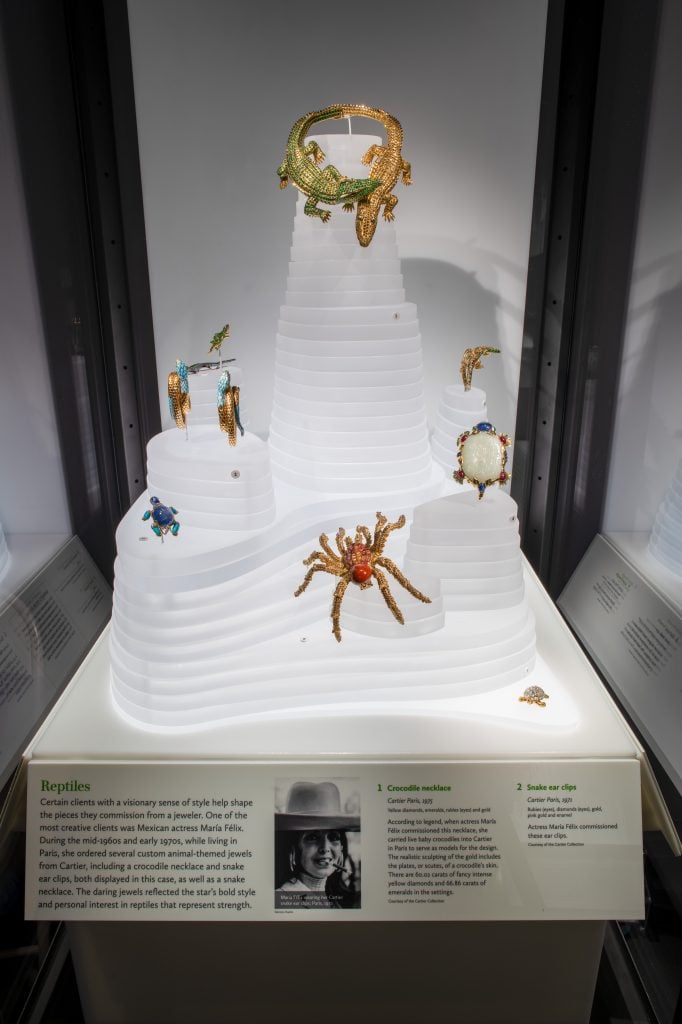
Reptiles jewelry in “Beautiful Creatures” at the American Museum of Natural History. Crocodile necklace, Cartier Paris, (1975), Yellow diamonds, emeralds, rubies (eyes) and gold; (Left) Snake ear clips, Cartier Paris, (1971) Rubies (eyes), diamonds (eyes), gold, pink gold and enamel; Salamander brooch (c. 1900), Demantoid garnets, diamonds, rubies (eyes) and gold; Lizard brooch (c. 1880) Demantoid garnets, diamonds, rubies (eyes), gold and silver; Tortoise clip brooch, Cartier Paris, (1962) Sapphires, diamonds, turquoise, platinum and gold; (Bottom) Tarantula brooch, Hemmerle (1995), Horse conch pearl, Umba sapphires, diamonds, colored diamonds and gold; (Right) Tortoise brooch French (c. 1900), Diamonds, rubies (eyes), gold and platinum; Tortoise brooch, David Webb (1971) Nephrite, rubies, sapphires, emeralds and gold. Photo D. Finnin/©American Museum of Natural History.
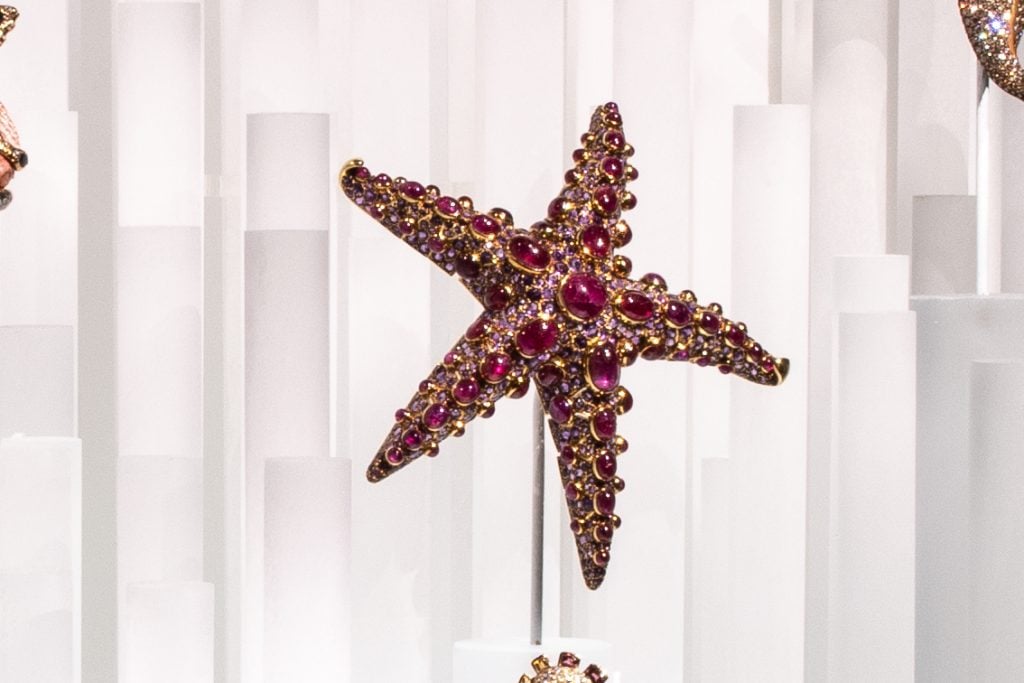
Pavé-set amethysts and 71 cabochon rubies cover the curved surface and articulated arms of this gold starfish brooch, which was designed by Juliette Moutard for René Boivin. Experts think only four examples of the starfish brooch were made during the 1930s. Photo by D. Finnin ©American Museum of Natural History.
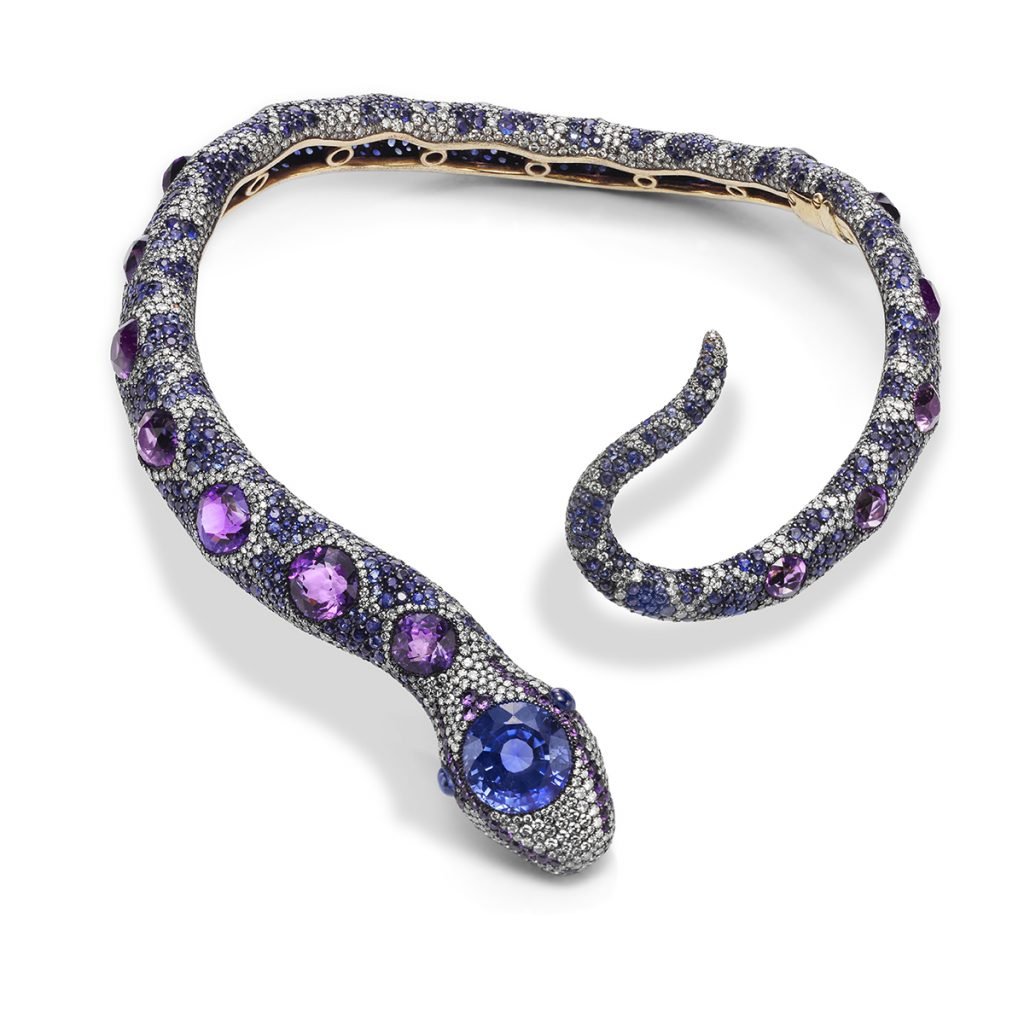
American designer Joel Arthur Rosenthal has created only a few snake necklaces. This one, made in 1990, features JAR’s signature blend of pavé-set precious and semiprecious stones (sapphires, amethysts, and diamonds) in a silver and gold setting. French actress Jacqueline Delubac nicknamed the necklace “Dudule” after she acquired it from JAR. The moniker, a proper French name, could have been a play on Delubac’s last name. Photo courtesy of FD Gallery.
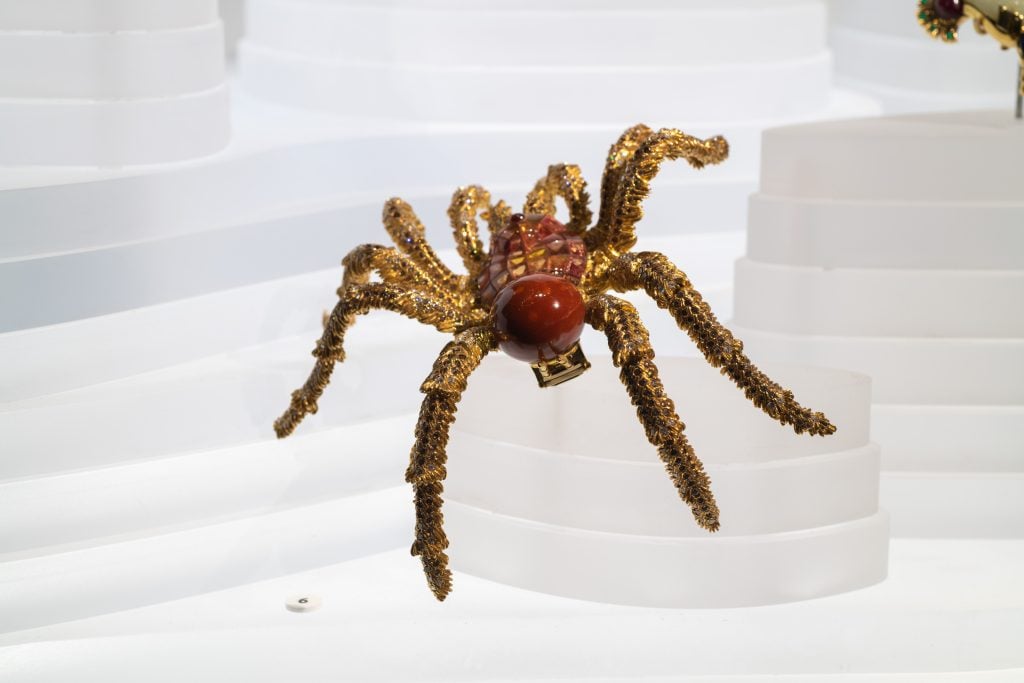
This tarantula brooch was part of a series of animal-themed jewels created by the family-owned German firm Hemmerle between 1979 and 1996. The natural 111.76-carat brown horse conch pearl in the rear segment of the tarantula is believed to be one of, if not the, largest natural horse conch pearls in the world.
Photo by D. Finnin ©American Museum of Natural History.
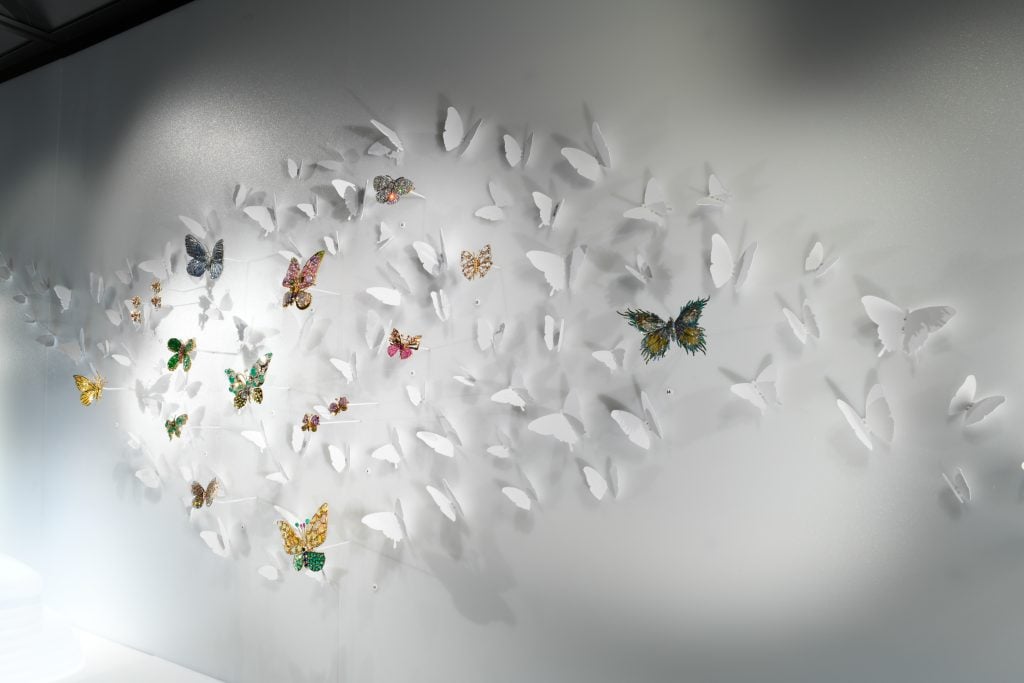
Jewelry based on creatures of the air in “Beautiful Creatures” at the American Museum of Natural History. Photo D. Finnin/©American Museum of Natural History.
“Beautiful Creatures: Jewelry Inspired by the Animal Kingdom,” is on view in the Halls of Gems and Minerals at the American Museum of Natural History, 200 Central Park West, New York, from June 12, 2021.